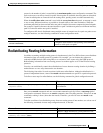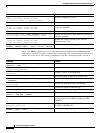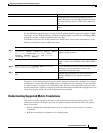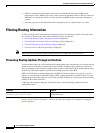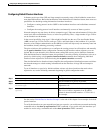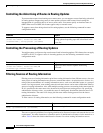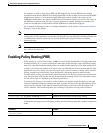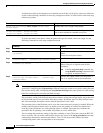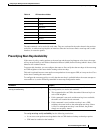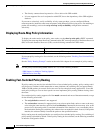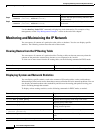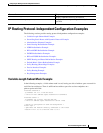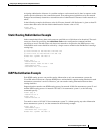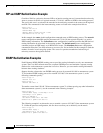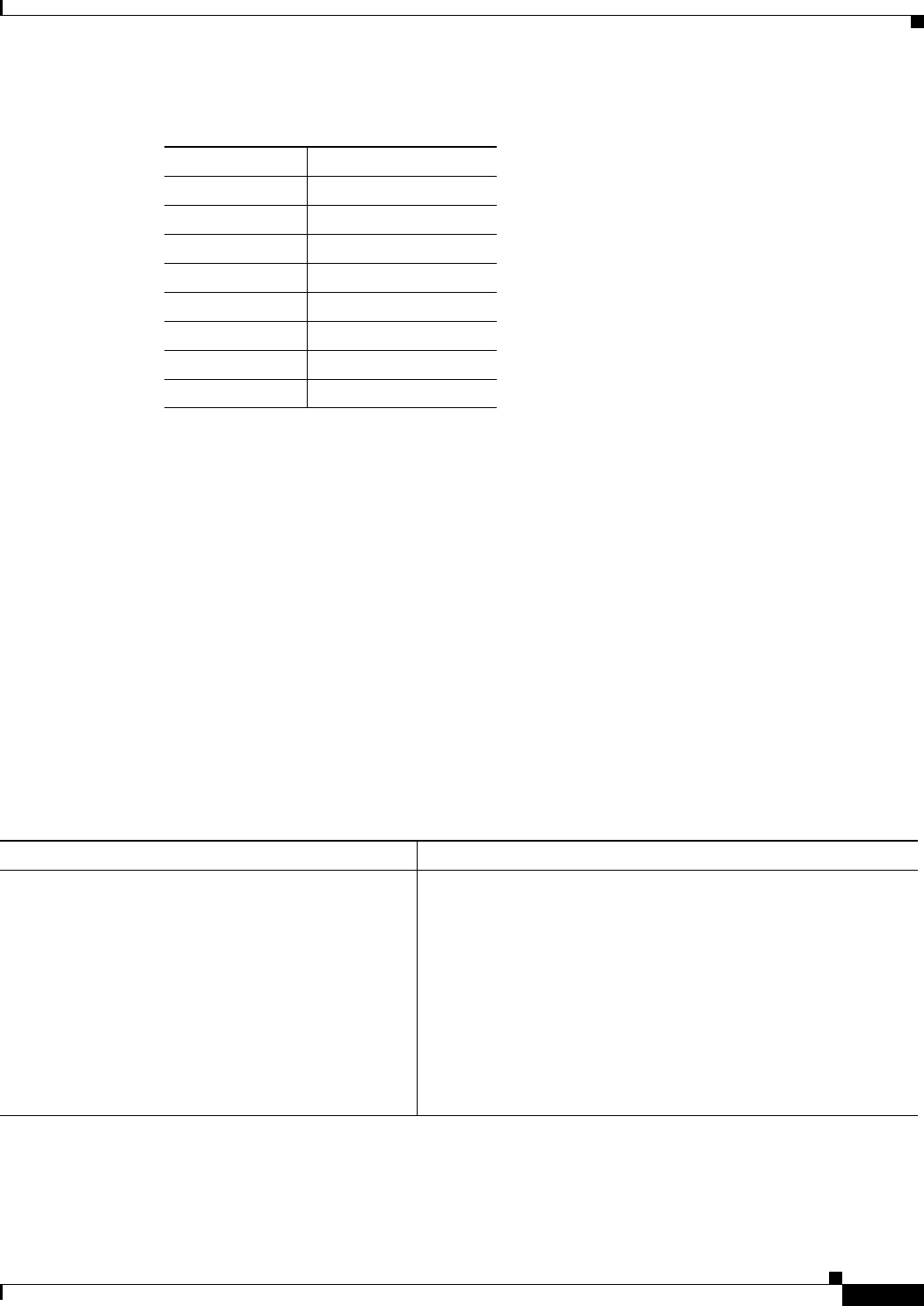
Configuring IP Routing Protocol-Independent Features
Enabling Policy Routing (PBR)
IPC-375
Cisco IOS IP Configuration Guide
The set commands can be used with each other. They are evaluated in the order shown in the previous
task table. A usable next hop implies an interface. Once the local router finds a next hop and a usable
interface, it routes the packet.
Preverifying Next-Hop Availability
If the router is policy routing packets to the next hop and the next hop happens to be down, the router
will try unsuccessfully to use Address Resolution Protocol (ARP) for the next hop (which is down). This
behavior will continue forever.
To prevent this situation, you can configure the router to first verify that the next hops of the route map
are CDP neighbors of the router before routing to that next hop.
This task is optional because some media or encapsulations do not support CDP, or it may not be a Cisco
device that is sending the router traffic
To configure the route-map policy to verify that the next hop is available before the router attempts to
route traffic to it, use the following command in route-map configuration mode:
The set ip next-hop verify-availability has the following restrictions:
• It can cause some performance degradation due to CDP database lookup overhead per packet.
• CDP must be enabled on the interface.
Table 10 IP Precedence Values
Number Name
0 routine
1priority
2 immediate
3flash
4 flash-override
5 critical
6 internet
7network
Command Purpose
Router(config-route-map)# set ip next-hop
verify-availability
Causes the router to confirm that the next hop, specified in the route
map configuration, are active and available.
• This command relies on CDP to determine if the next hop is an
active CDP neighbor.
• If this command is not used, and the next hop is not available,
the traffic will remain forever unrouted.
• If this command is used, and the next hop is not a CDP
neighbor, the router looks to the subsequent next hop, if there
is one. If a subsequent next-hop is not defined, the packets
simply are not policy routed



